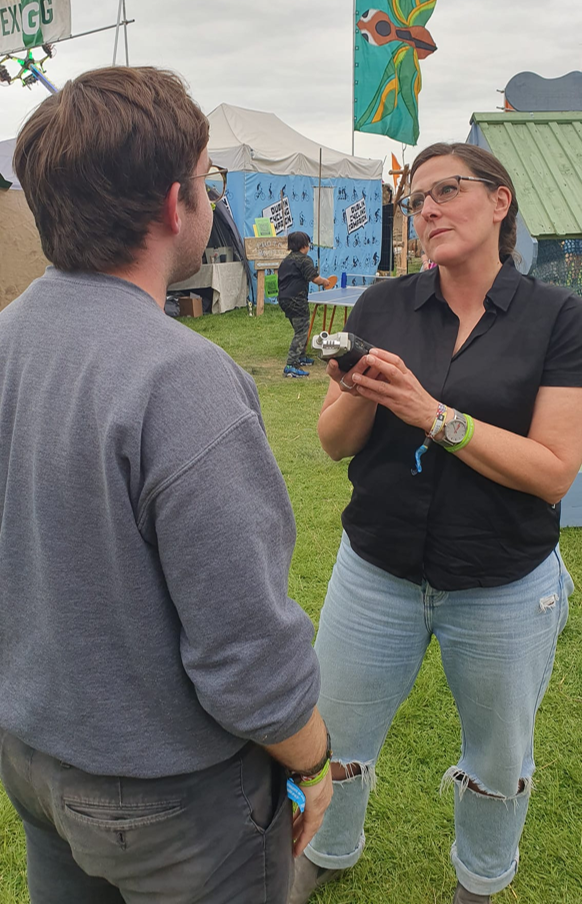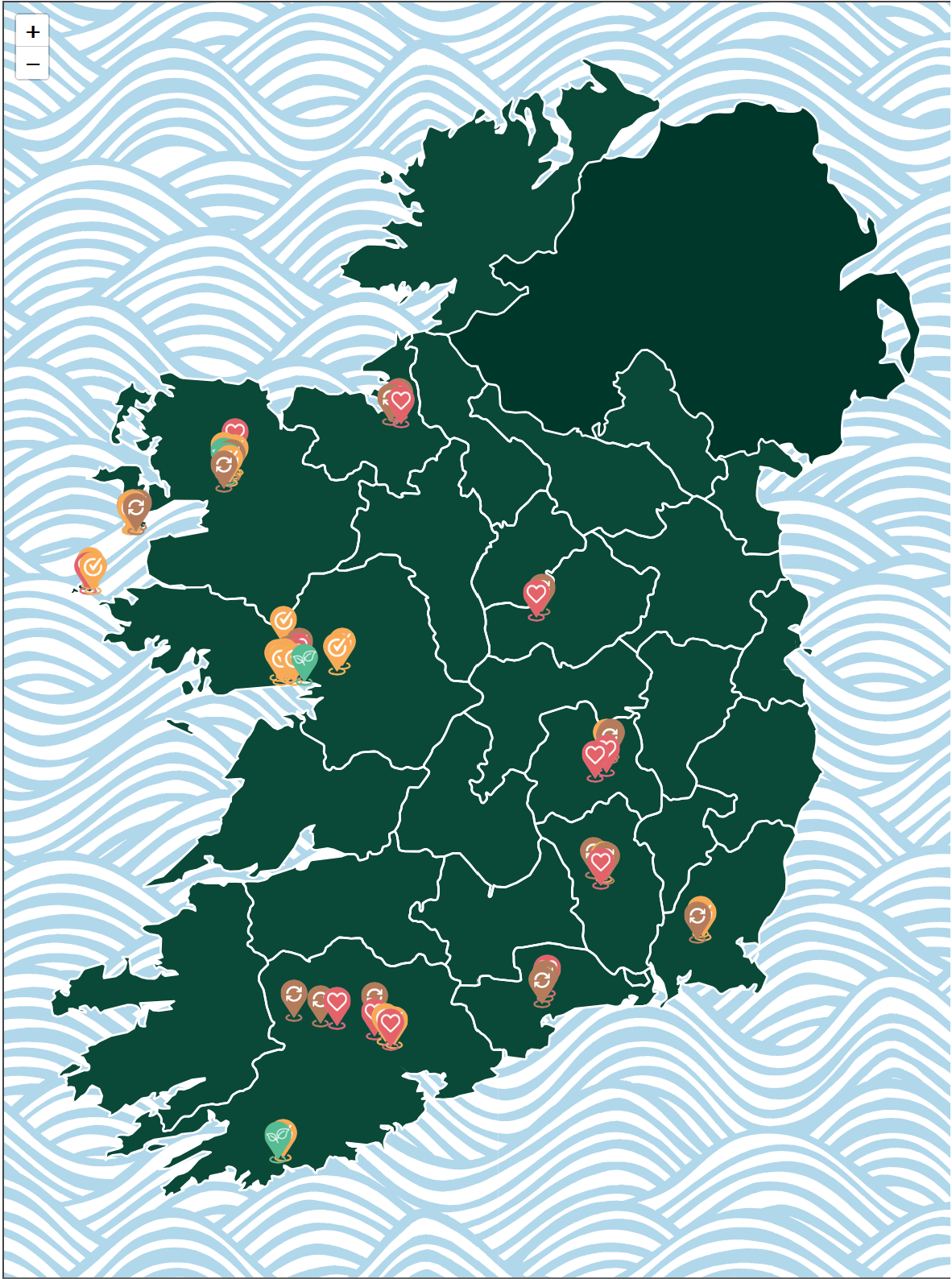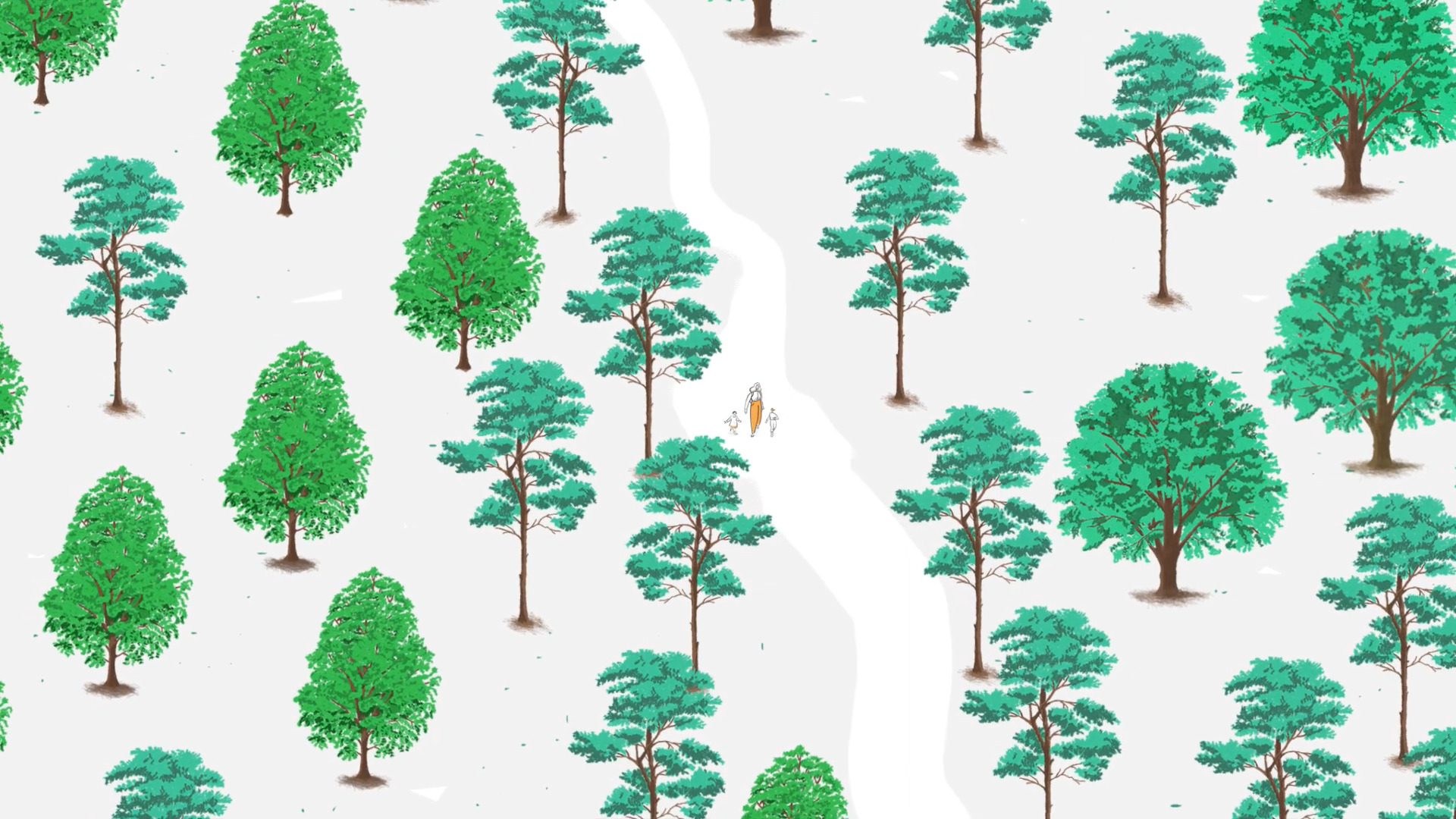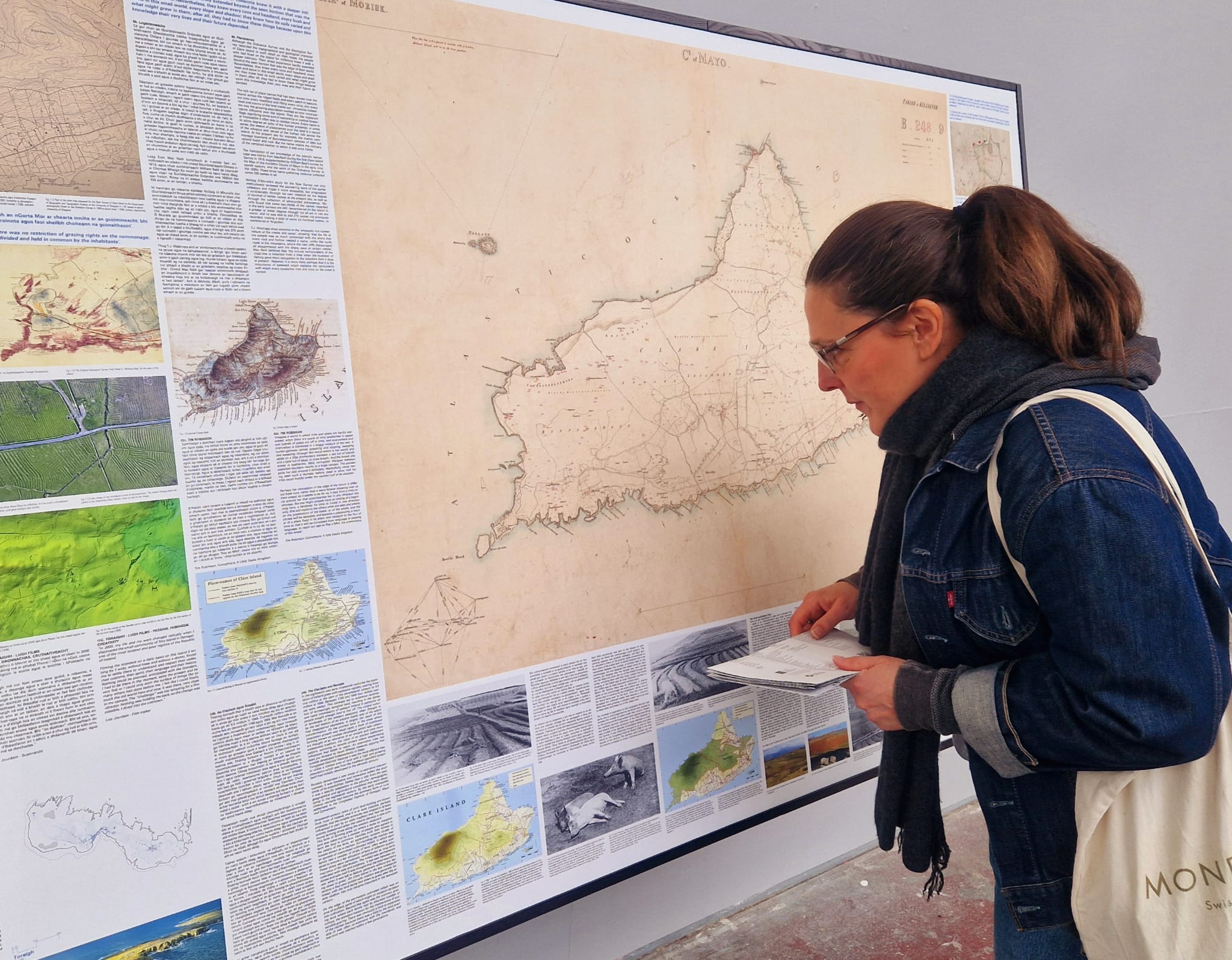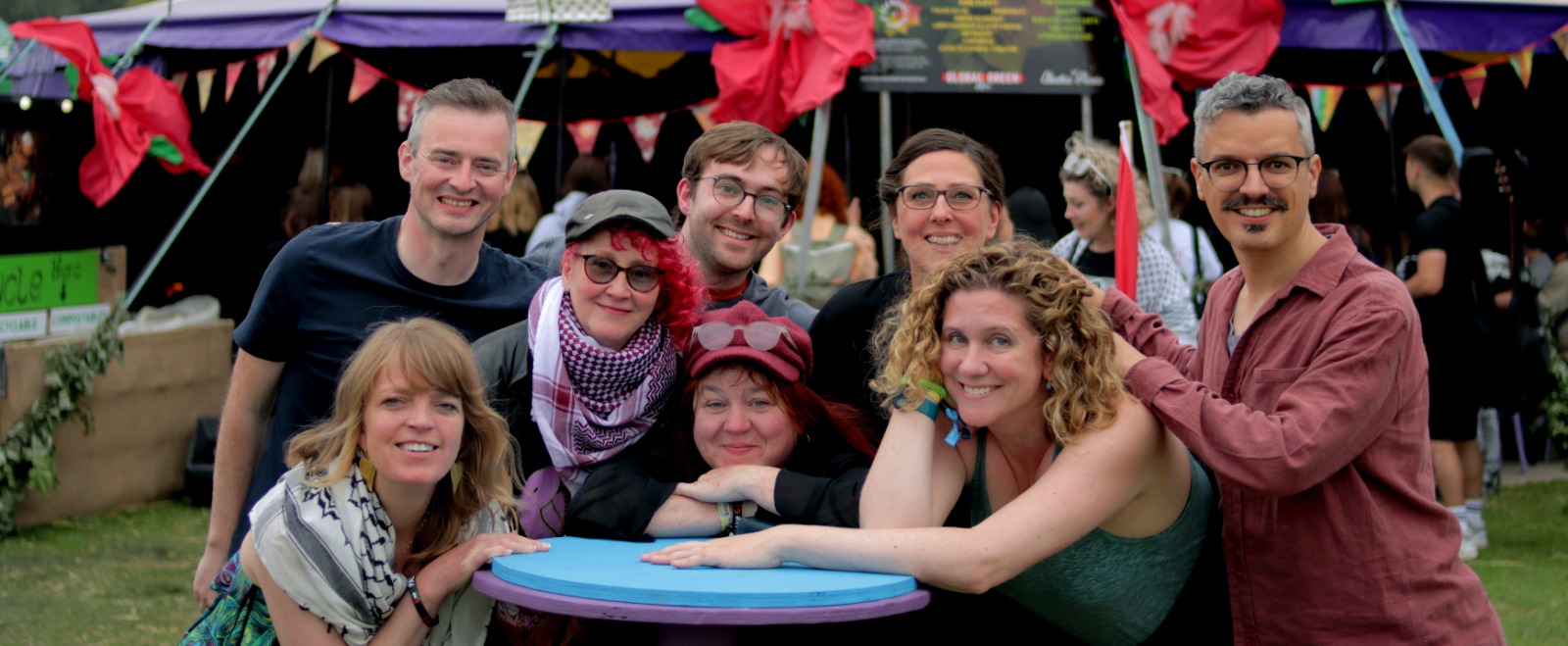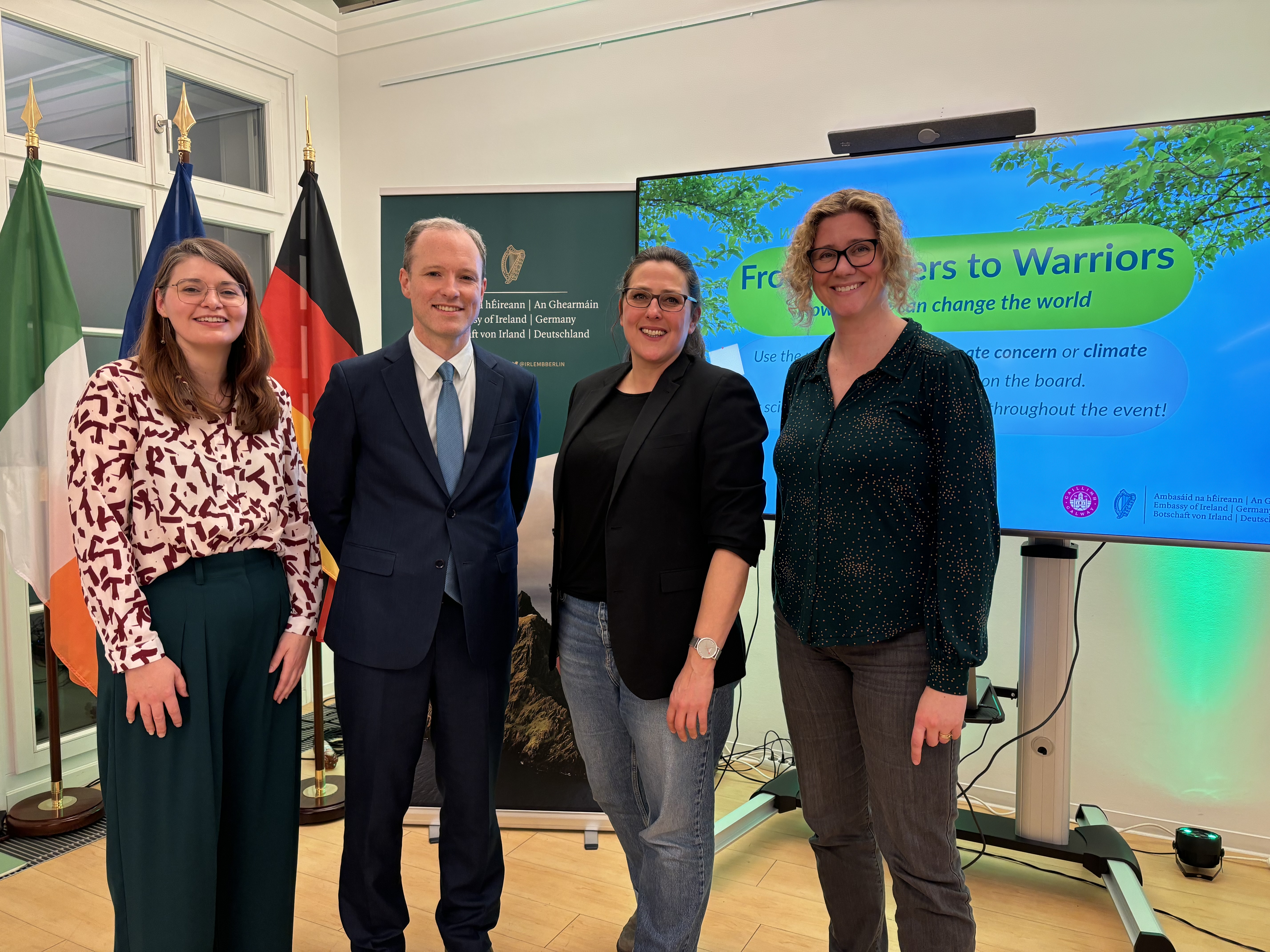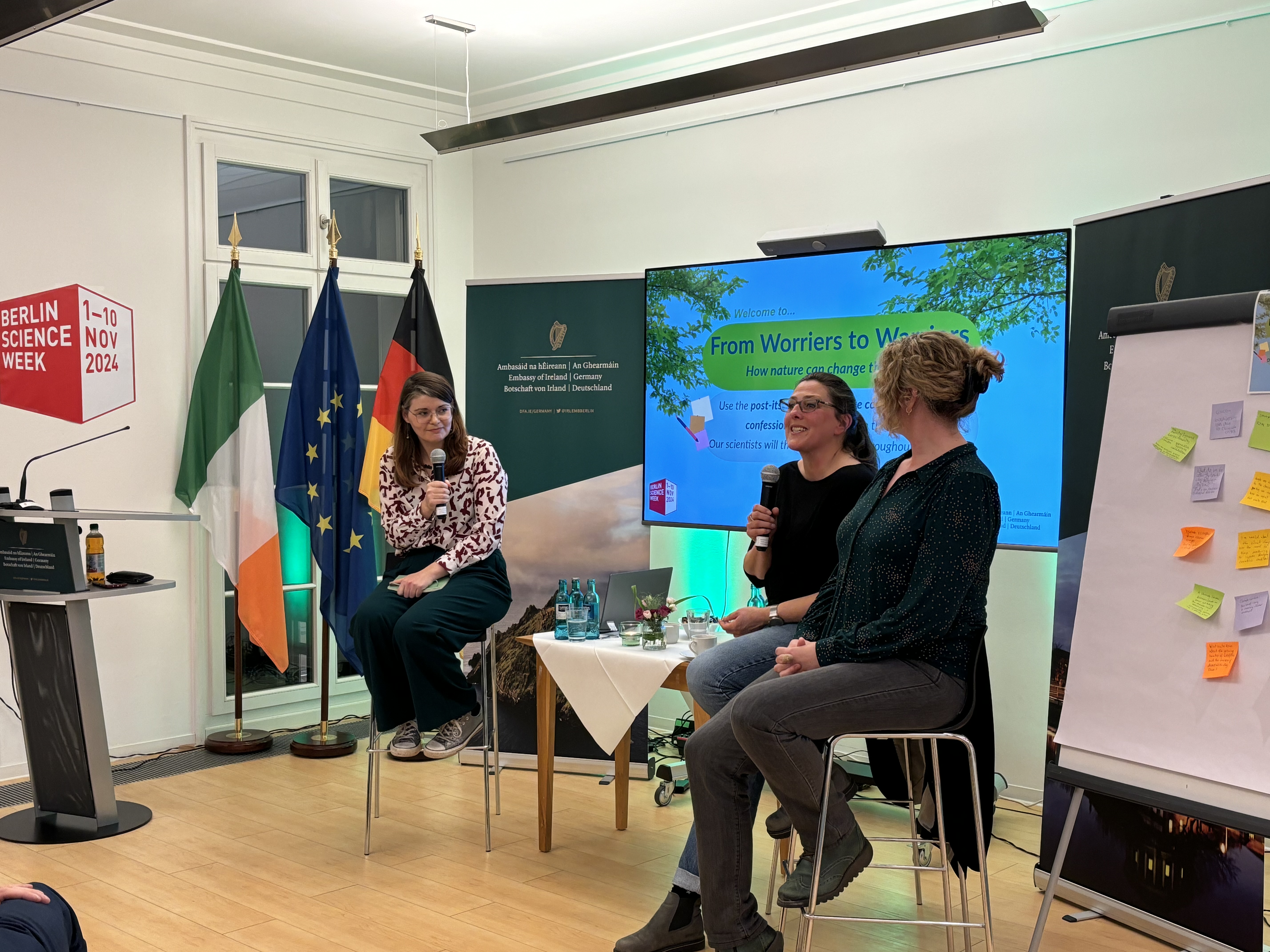Prioritising the places and people that need it the most
Caomhnú
{Empty}
Caomhnú is a storytelling project exploring Irish rural communities’ perspectives on climate change and climate action. Many people living in rural areas feel like their voices are not included in conversations about the climate crisis, even though the regions they live in are already experiencing difficult climate-related changes. Caomhnú centres and connects rural communities by sharing their climate stories to increase climate resilience and sense of agency for climate action.
Ireland
Regional
Irish rural and remote communities along the west coast of Ireland, in locations with populations from 100 to 6,000 people.
Mainly rural
It refers to other types of transformations (soft investment)
Yes
2025-01-30
Yes
Funding provided through IMPETUS4CS, a Horizon Europe research and innovation programme under grant agreement number 101058677, and the University of Galway
No
No
As a representative of an organisation
The complex and existential threat of climate change means people struggle to feel their actions can make a difference. This effect is compounded for rural communities, who will bear the brunt of climate change, but are often forgotten by decision-makers. In a recent survey by the Irish Environmental Protection Agency, 90% of people said that “Ireland has a responsibility to act on climate change” (Climate Change in the Irish Mind, 2021). However, our conversations with members of rural communities through the ROAM project highlighted that they feel that their experiences and perspectives of the climate crisis are not reflected in proposed policy actions. Caomhnú built directly on this feedback by listening within and beyond local rural communities through the art of storytelling to build an interactive map of oral histories of climate change and resilience in Ireland, as well as through creating a short video to disseminate key talking points from the communities. A central goal of our project was to platform Irish communities’ voices and identify key focus points for them in relation to the past, present and future of the climate crisis. The key areas identified from the 34 participants’ stories and incorporated into the map include: Observed Climate Change (19 instances), Nature Appreciation (4 instances), Climate Action (30 instances) and Hopes for the Future (15 instances). Understanding place-based impacts and actions that can be taken at the local level is key to enhancing public engagement in decision and policy making in the face of climate change, and it is essential to include as many diverse voices as possible.
Climate Change
Climate Action
Rural Empowerment
Citizen Science
Storytelling
The focus of our project was to explore environmental awareness amongst Irish rural community members in the context of climate change, climate action and climate hope. The resulting stories demonstrate a deep-rooted connection with nature of many of our participants, sharing both emotional responses, personal observations and scientific insights into the changing environment around them. The travelling nature of our work through visiting different communities in remote locations also provided us with an opportunity to disseminate information on sustainable development or lifestyles, by directly sharing actions taken in other communities as we visited new areas. We noted that many of the participants left the recordings feeling hopeful and that there was an enhanced recognition of the actions they were taking, which we hope will lead to an increased stewardship of the natural environment among participants.
A recurring theme throughout the stories collected was their proactivity in addressing their concerns about climate change, whether this is through local actions within their community such as organising events to plant trees or through individual actions such as growing their own fruit and vegetables or sustainable approaches to the built environment. A small but important reflection point was that for older participants they have already seen the results of their actions (e.g. such as trees they previously planted) whereas many of the younger participants were participating in pro-environmental activities with the hope of impact. Another concerning point is the fact that all of our participants who spoke about climate change had noted impacts in their localities, such as due to weather, flooding and biodiversity loss.
A recurring theme throughout the stories collected was their proactivity in addressing their concerns about climate change, whether this is through local actions within their community such as organising events to plant trees or through individual actions such as growing their own fruit and vegetables or sustainable approaches to the built environment. A small but important reflection point was that for older participants they have already seen the results of their actions (e.g. such as trees they previously planted) whereas many of the younger participants were participating in pro-environmental activities with the hope of impact. Another concerning point is the fact that all of our participants who spoke about climate change had noted impacts in their localities, such as due to weather, flooding and biodiversity loss.
The aesthetics of Caomhnú have been directly influenced by the collaboration between artists and scientists, with a particular highlight here being that many of the artists come from or are closely connected with rural communities. The structure of the project had to be centred on an ethical approach to citizen science and storytelling, by nature of the research process, but the engagement of the citizen storytellers was greatly enhanced through the recruitment of Órla McGovern, a storyteller who is active across the west coast of Ireland. Investment in elements such as the logo and the video were specifically made with the intention to ensure Caomhnú was aesthetically pleasing and attractive. The connection with the climate improvisation show (mentioned later) is also a key element here as they mutually increased the cultural and natural capital of attendees.
An underlying core tenet of the Caomhnú project was to engage rural community members in climate change conversations. They are often underrepresented and underserved, as many projects focus on easier to access groups in urban areas. However, they are vital to the transformative change that is urgently needed in climate policy (Irish Climate Change Assessment by the Environmental Protection Agency, 2023). By nature of working with an undergraduate researcher who is connected across multiple rural and student communities, we were also able to engage young and LGTBIQ+ people in our project, which is more representative of modern Irish society.
Our project team is led by women, with a majority of women overall. During the stages of the project, we sought to design inclusive and accessible materials and processes to minimise barriers to entry, such as through using plain English in our consent forms, using both in person and digital opportunities for engagement and ensuring our ethics process was robust.
Our project team is led by women, with a majority of women overall. During the stages of the project, we sought to design inclusive and accessible materials and processes to minimise barriers to entry, such as through using plain English in our consent forms, using both in person and digital opportunities for engagement and ensuring our ethics process was robust.
Resilience to the impact of climate change is not a solitary process, rather it is a social one. Sharing stories that promote climate action is a shared responsibility, increasing connections between people, helping build social capital and as such resilience. For individuals and communities, sharing stories helps make sense of experiences and builds confidence in the capacity to adapt. Our project raised awareness of what individuals and communities can do in the face of climate change and empowered them to take action. It will help move rural communities toward adaptation to the new climate situation through local action and informed decision making. It connected rural Irish citizen science participants and communities through stories of climate change and action, to share climate resilience movements more broadly and empower individuals and communities to identify themes and connections for greater impact.
The Caomhnú team leveraged previous connections established within academia, community champions, local governments (including county climate and biodiversity officers) local and with international collaborators to first promote engagement and subsequently to disseminate project outputs such as the video and map. These stakeholders acted as critical friends to help shape the structure of the project and improve the robustness of the online story collection process as well as shaping the in person collection approach.
Caomnhú presented a unique synergy of Irish oral traditions, citizen science and climate resilience, as storytelling helps to highlight messages for community action, including climate action, in a culturally acceptable manner, to raise awareness and change behaviour. The Caomhnú team has extensive experience in community engagement, environmental science, science communication and art-science research. We have previously collaborated on community based projects that explored rural Irish communities perspectives on climate change and climate action, through arts and other methodologies. We are also active at international level within the science communication, environmental science and community-practice domains. In this project, we combined our expertise to co-create a process to collect and platform stories from rural communities, iteratively refining our process in response to ethical approaches, best practice and (artistic and scientific) lessons learnt in situ during data collection. This team synergy was aided by the fact that we share a common theme across our prior work: we seek to address power dynamics between traditional knowledge domains such as research institutions and local communities or individuals. By making space for more diverse knowledge and perspectives in Caomhnú, we expanded communities of engagement outside of major population centres. This will open the door for not just participation, but input from people who may not have had a chance to have their voice heard within academic walls before.
Our key strategy was to go to rural communities rather than expecting them to come to us, engaging with them in their localities, which allowed people to engage in climate action discussions locally, but with an opportunity to feed into national debate without having to travel to urban centres. We built on local events, gathering stories via sessions run in conjunction to popular events in their areas to maximise the likelihood of engagement. Some of our events were connected to the ‘We Built This City on Rock and Coal’ climate improvisation show, which was actively promoted through local newspapers, national newspapers and radio. We also explored other local campaigns, building on connections with partner organisations who shared our project via their network and through our connections with organisations in rural communities. Our map is also a key part of our innovation, because it collates and platforms rural communities perspectives on issues in their words and voices. The human dimensions and experiences of climate change should never be underestimated or hidden, and the Caomhnú storytellers (rightly) make this impossible to ignore.
The combined artistic and scientific approaches to storytelling provide a multifaceted way to collectively understand and map climate resilience and action in rural communities that are frequently underserved through the centuries old tradition of storytelling. Caomhnú provided an opportunity for citizen science storytellers in different rural locations (100-6000 inhabitants) to share their stories about the climate past, present and future. These responses were then mapped, sharing trends across the project via an online map visualisation as well as a short video (both available on the website). Another unique approach in Caomhnú is the connection with the climate improvisation show ‘We Built This City on Rock and Coal’, which brought scientists and theatre makers to rural locations in coastal Ireland for interactive events driven by research, comedy, music and what matters most to the community. This means we had a unique opportunity to engage artists and attendees in our citizen science project and by building directly on an established event series, maximising our exposure and recruitment opportunities.
Caomhnú has multiple opportunities for replication. Rural community members in other locations could be empowered to take part in the conversations around climate resilience and policy through participation. This would make public space for debate and discussion of climate change and possible mitigations, with scaffolding resources and expertise presented in an engaging and accessible way. Awareness, understanding, and agency of rural communities would be enhanced, so they can create and explore local climate action and see the potential for the outcomes to influence policy change. This would act to increase public engagement in climate action in other locations, showing how it is a positive and empowering process for understanding and protecting the world around us.
The live events and online mapping resource could also be transferred, which would both contribute to rural community development on climate action and resilience, in turn improving the efficacy of Climate Action Officers in other locations, and of the Department of Environment, at the national level, promoting the just transition. This impact would be bidirectional, providing decision-makers with an evidence basis for climate change policies that affect rural areas, as well as showing participants from rural communities that participation in the process of STEM can affect meaningful change.
The live events and online mapping resource could also be transferred, which would both contribute to rural community development on climate action and resilience, in turn improving the efficacy of Climate Action Officers in other locations, and of the Department of Environment, at the national level, promoting the just transition. This impact would be bidirectional, providing decision-makers with an evidence basis for climate change policies that affect rural areas, as well as showing participants from rural communities that participation in the process of STEM can affect meaningful change.
Threats to biodiversity, poor infrastructure, poor job prospects and the subsequent loss of community are all being accelerated in rural communities by the climate crisis, with the Irish government acknowledging this and prioritising a ‘Just Transition’. The name of our project is therefore ‘Caomhnú’, which means ‘conservation’ in both the artistic and environmental contexts in Irish. This feels particularly appropriate given the biodiversity loss and climate change that is already heavily impacting rural communities. By conserving stories of climate action and environmental changes through citizen science, we aim to catalyse structural changes and empower rural Irish communities towards environmental justice, which often uses participatory methods.Our work aims to integrate the Irish tradition of storytelling and local climate action, recognising the gap in knowledge sharing that exists between place-based implementation and enforcement of relevant climate action, and the wellbeing and resilience of places and citizens.
Our central impact in our project has come from our citizen storytellers. Through Caomhnú we have been able to platform their voices, recognise their concerns and promote their ongoing activity. The openness and length of these conversations have repeatedly highlighted how our storytellers feel welcome and comfortable discussing these difficult topics. Informal discussions with our storytellers have already highlighted how this work is encouraging sustainable practice, pro-environmental activity and engagement with politics, so the strongest impact is in the political and environmental sphere. The release of the map and the video provided vital ways of amplifying our citizen storytellers to our stakeholders, both to enable stakeholders to understand rural communities' current perspectives and make them aware of the value of incorporating those voices when decision making. The scientific impact is also quite interesting, as we have already been contacted by colleagues to share best practices and explore future opportunities building on the methodology and processes that we have established.


